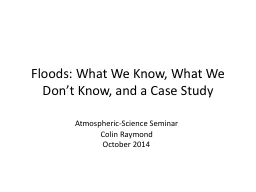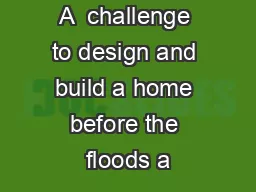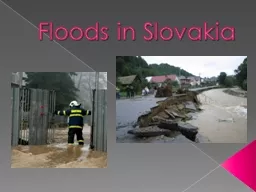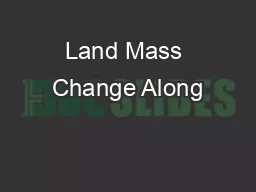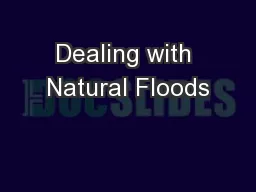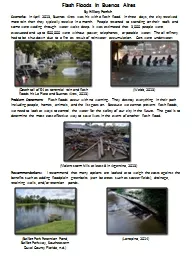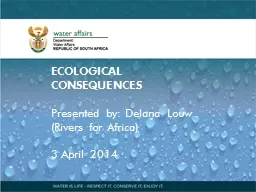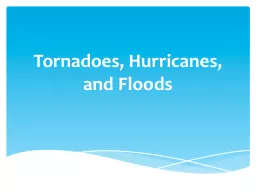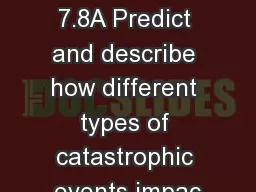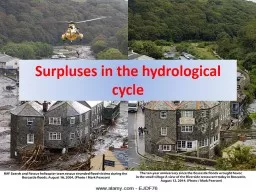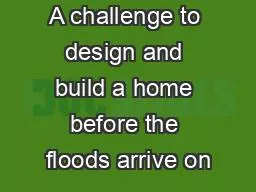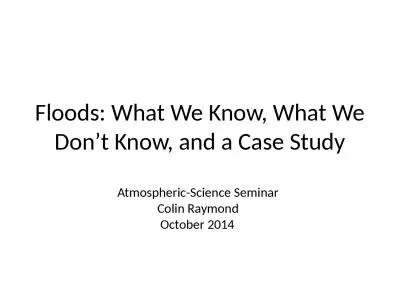PPT-Floods: What We Know, What We Don’t Know, and a Case Stud
Author : myesha-ticknor | Published Date : 2016-04-20
AtmosphericScience Seminar Colin Raymond October 2014 Outline What We Know IPCC Report What We Dont Know Yet Jain amp Lall 2001 Case Study Martius et al 2013 What
Presentation Embed Code
Download Presentation
Download Presentation The PPT/PDF document "Floods: What We Know, What We Don’t Kn..." is the property of its rightful owner. Permission is granted to download and print the materials on this website for personal, non-commercial use only, and to display it on your personal computer provided you do not modify the materials and that you retain all copyright notices contained in the materials. By downloading content from our website, you accept the terms of this agreement.
Floods: What We Know, What We Don’t Know, and a Case Stud: Transcript
Download Rules Of Document
"Floods: What We Know, What We Don’t Know, and a Case Stud"The content belongs to its owner. You may download and print it for personal use, without modification, and keep all copyright notices. By downloading, you agree to these terms.
Related Documents

